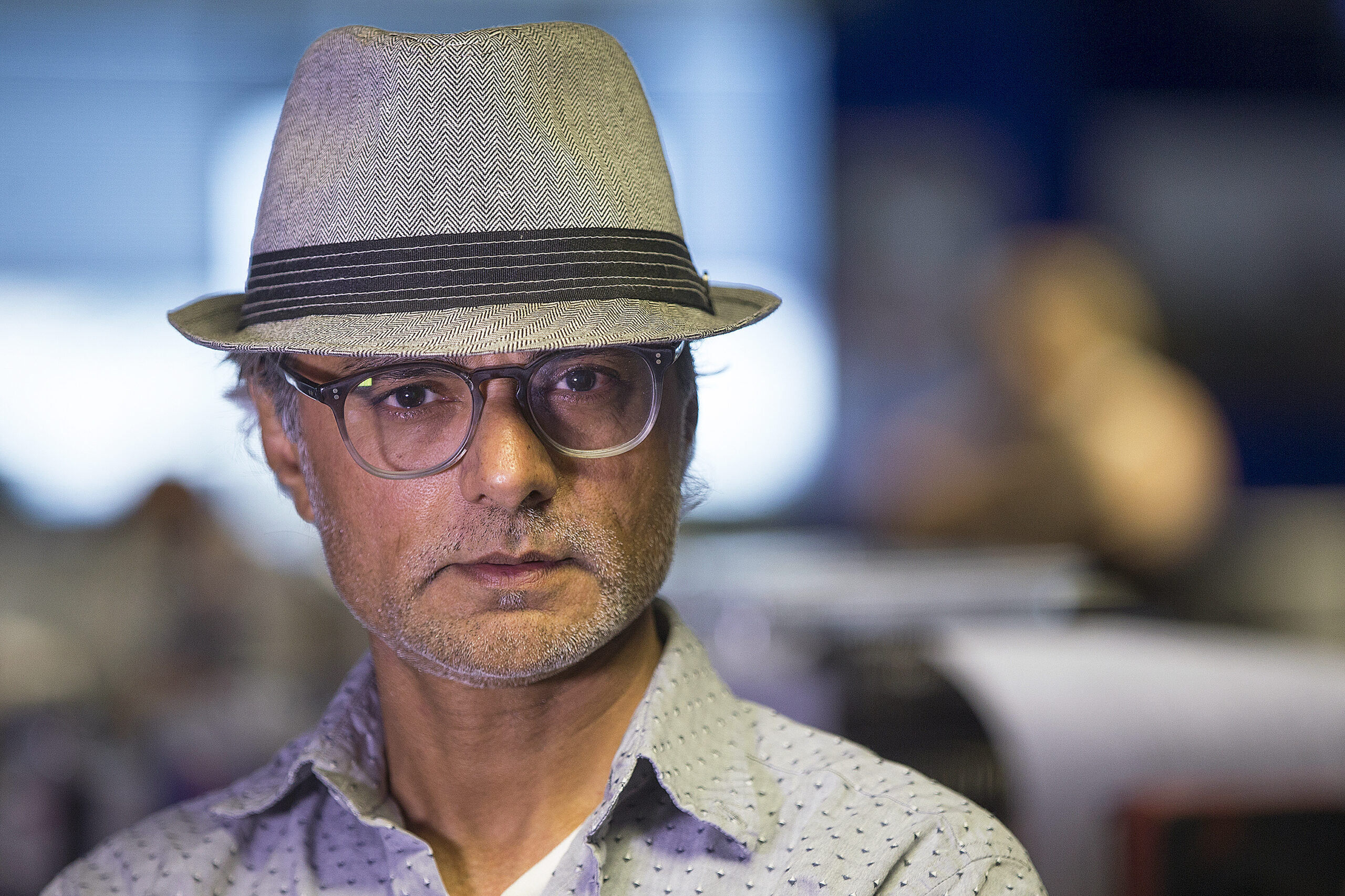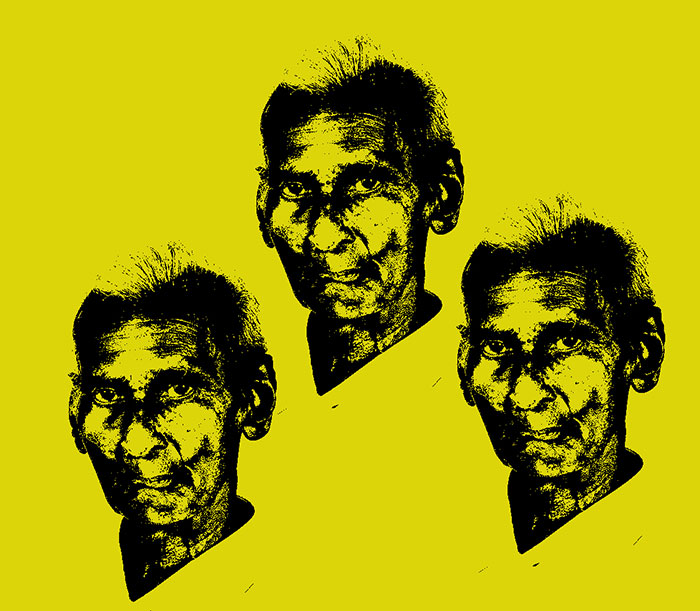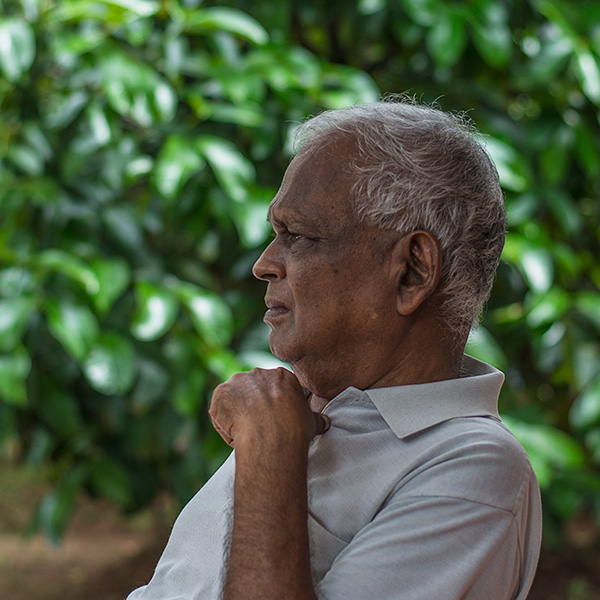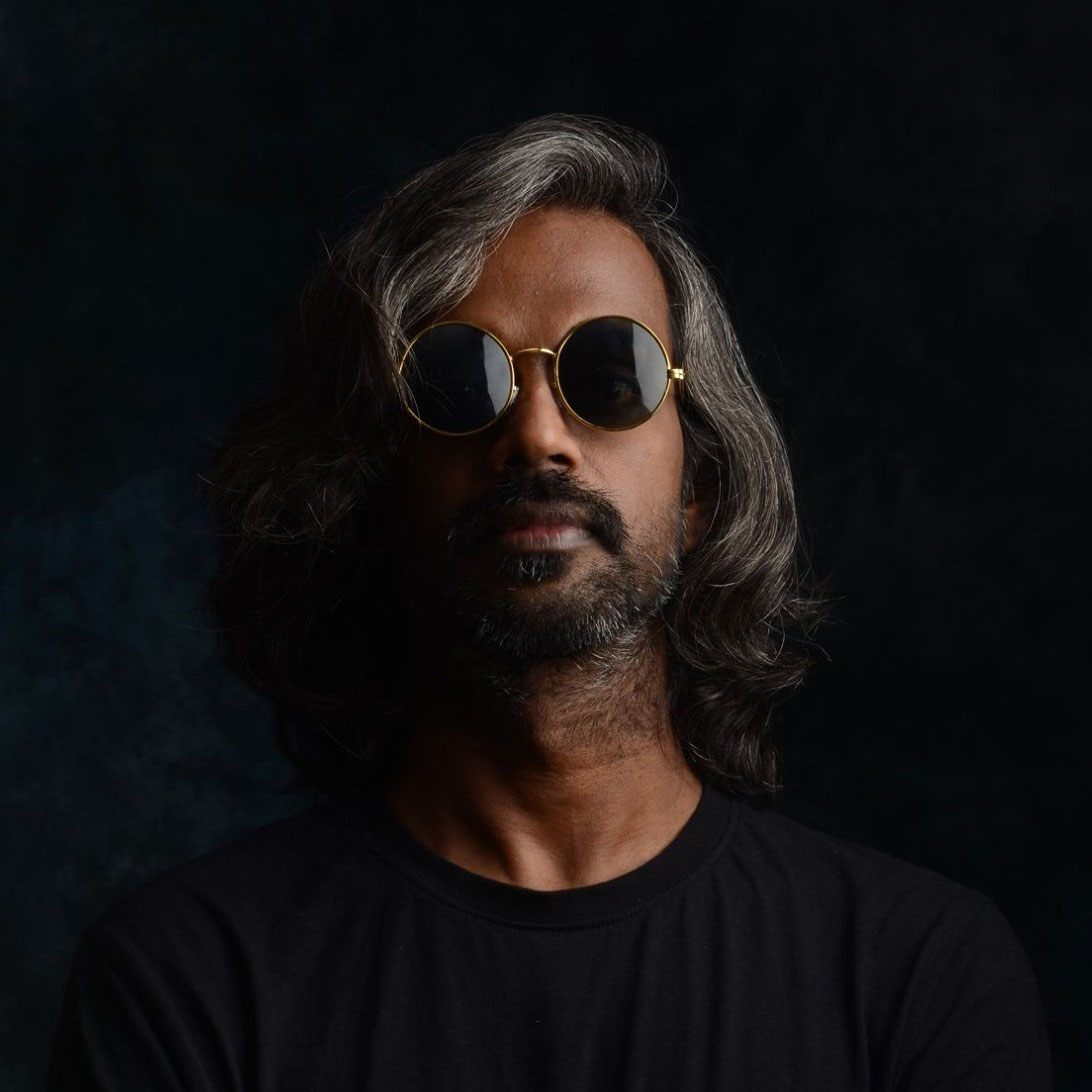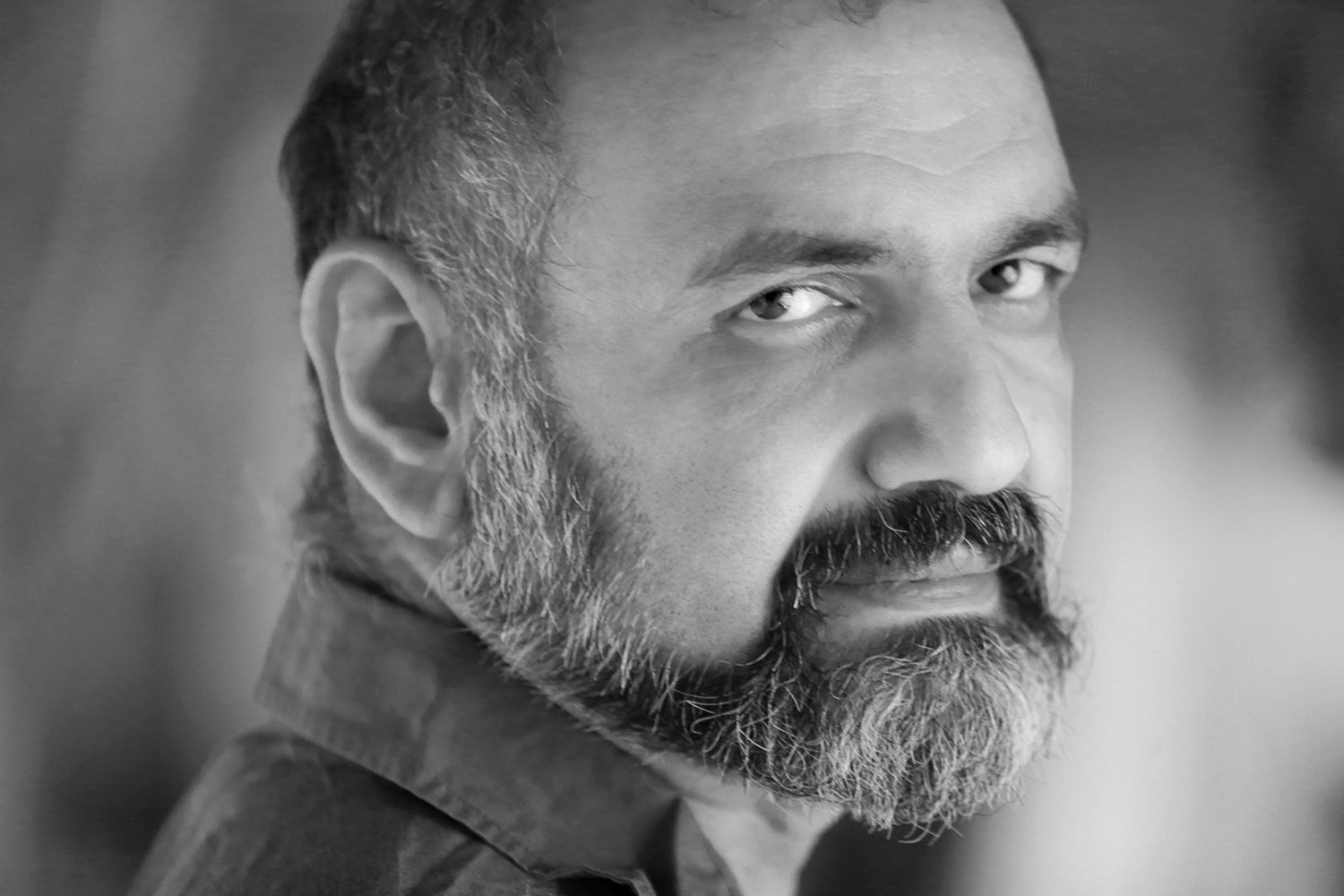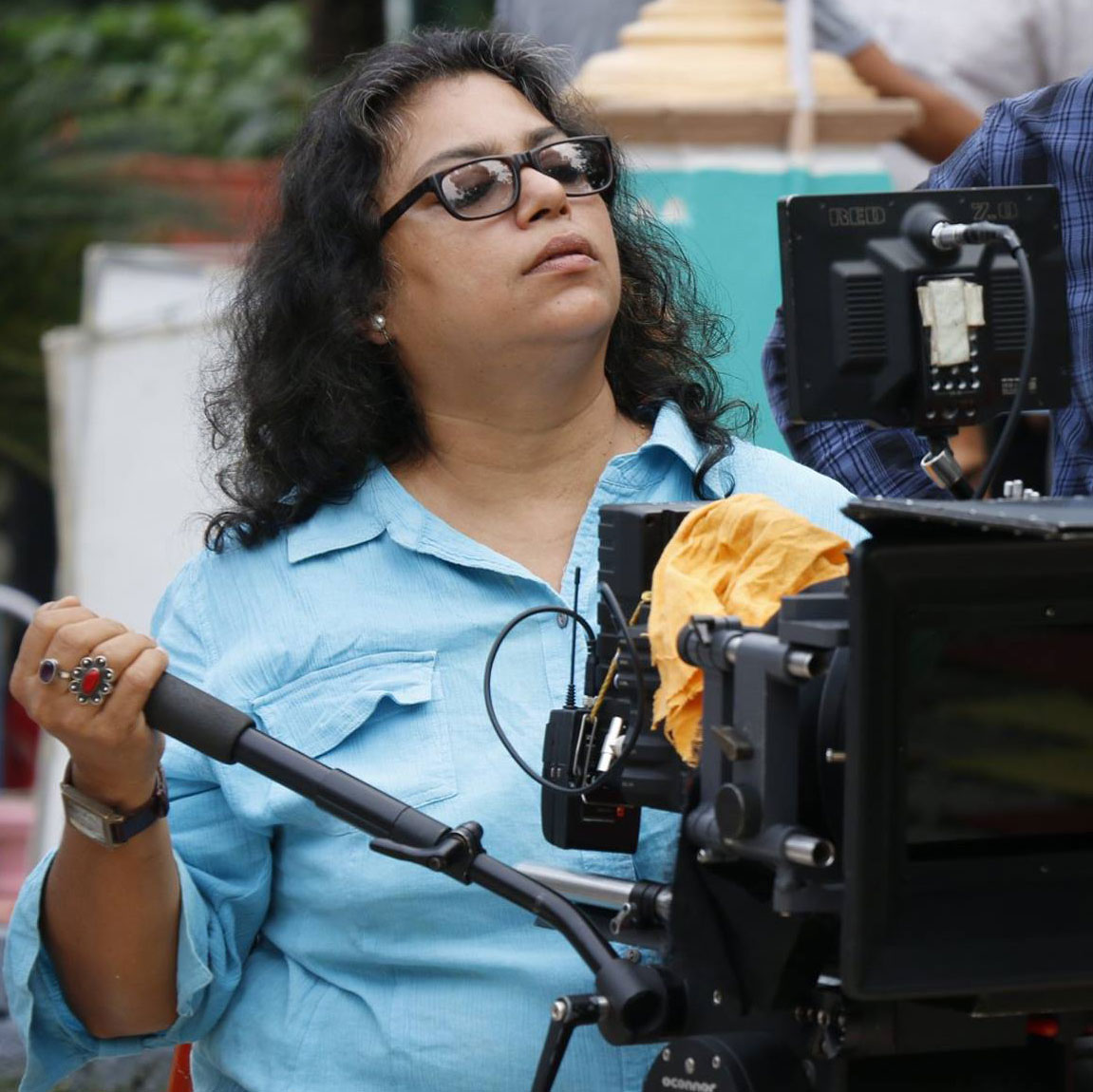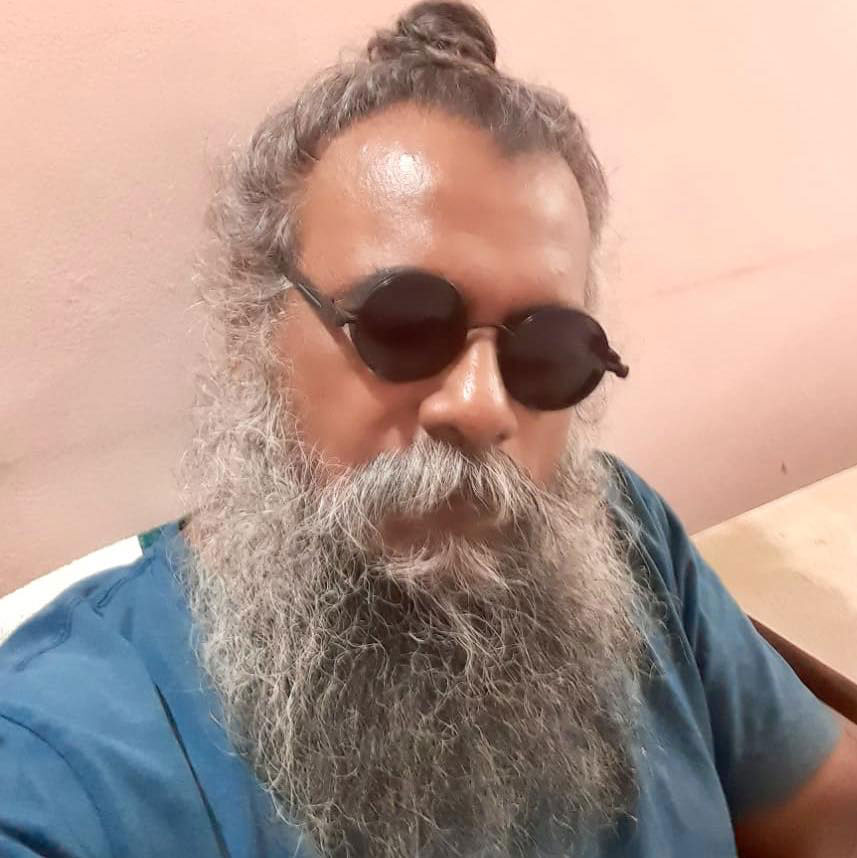Face to Face
Photo Mail publishes
Exclusive interviews
With photographers
Academicians and artists
From related visual
Arts practice
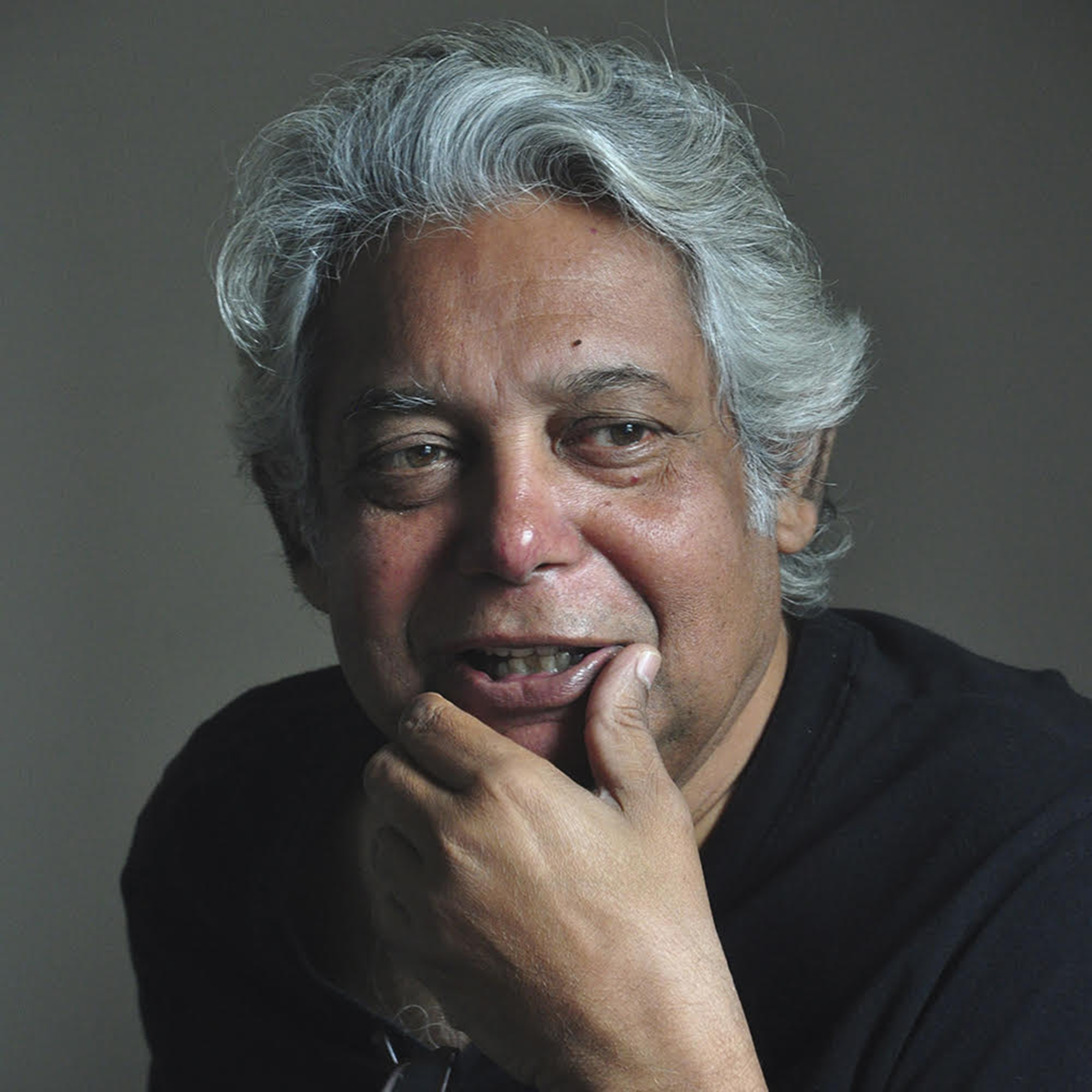
Prashant PanjiarPhotograph by Manish Sinha
Prashant Panjiar is an acclaimed photojournalist and curator with almost four decades of experience in India and abroad. He has been a photojournalist and editor with several media houses including Patriot, India Today, and the Outlook. He has been practicing as an independent photographer since 2001. Panjiar has worked on stories for several international publications such as Time, New York Times, among others. He has also worked with international non-profit organizations, covering health, education, and livelihood issues in Asia and Africa. Besides, he has also played the role of curator for photography shows in India and abroad. He has led the curatorial team of all three editions of the Delhi Photo Festival. Panjiar has also served on the jury of the World Press Photo Awards, the China International Press Photo Competition, the Indian Express Press Photo Awards, and the National Foundation of India’s annual photography fellowship.
Prashant Panjiar’s latest photobook ‘That Which Is Unseen’ was launched on September 18. Published by Ahmedabad-based Navajivan Trust, this book is a collection of photographs and backstories from Panjiar’s almost four decades of photography career. Read More Here.
– The Editor
A good number of your projects are related to political and social issues. What led you to these subjects? Did your beginning as a press photographer play any role?
No, no… Right from the beginning, I have been interested in these subjects. In fact, most of my photojournalistic works are in this field. So, it is not recent but starts from 1981.
Was there anyone who influenced you into choosing photography?
Well… It needs a long answer to that question. In brief, I started having an interest in photography and journalism after getting admission to college. It was the time after the Emergency and a lot of magazines and good photography works were out there. The media was doing a very good job then. That’s when I felt inspired and decided to go ahead and become a photojournalist.
How difficult was it for you to pursue a personal project while you were working in the editorial field? Was it possible at that time?
Usually, it is difficult. But, I consider myself lucky that I was in photojournalism at one of the best times in India. I got a lot of opportunities to do a lot of good work and follow my interests. Also, I was privileged to be one of the editors in Outlook and could substantially push the kind of stories that I liked, not just for myself but also for the magazine.
You have extensively covered natural calamities like cyclones and tsunamis. What are the ethical challenges one faces while covering such tragedies, especially when you are sharing the experiences of the grieving people and have to photograph them from close-quarters?
The main challenge of course is dealing with possibilities of invasion of privacy, something which all photojournalists on the field had to deal with. Though our work does involve a certain invasion of privacy, which is unfortunate, all I can say is that even in that situation, we try to be as respectful as possible. The important aspect of this work is that even if there is an invasion of privacy, that work is serving a much larger purpose. Therefore, especially during tragic circumstances, like natural calamities, these stories and images have to be presented to the larger public. The world at large has to be made aware of these events, unfolding in probably the other side of the world. Despite this, it is important to be respectful and empathetic to the emotions that are being expressed, while those feelings are being captured on film.
During your project on HIV positive patients, how willing were they to share their stories and be photographed?
Fortunately for me, they were very willing and their willingness is visible in the photographs. The project was a joint collaboration between the patients and us, and the project was conceptualised and executed, with their active participation.
One of your photography projects named ‘The Wall’ was shot in Ahmedabad, in a communally sensitive area. What were your initial thoughts about interacting with the locals? And after the project, what were your thoughts on the communal divide created by humans?
At that time, I had come across a small news item about how a wall had sprung up between two communities in Ahmedabad after a massive, widespread riot. That was the inspiration for my project, which I then photographed. I was very keen to bring to the surface, the long-term effects of hatred on human beings and the society. In the process I focused not just on the wall but the way society was evolving in hate. I wanted to give the subject the importance it deserved. I feel such stories caught on film can create a powerful impression of the long-term impact of hatred.
Who commissioned the project?
I was working with Indian Express back then and this was a news feature for the Express.
What are your views about digital photography and your perspectives now, more than two decades after you first pursued it?
It is important to embrace new technology, which often comes with the ease of doing things. Both the digital age and the internet boom are taking us to new developments.
Photography then was not limited to just good creating photographs but also involved arranging the logistics of getting the prints made and getting them published, among others These aspects have now become easier.
It feels very good because with the digital era, there is a democratisation of photography. Photography is no longer elitist, accessible only to those who can afford and indulge in.
The expansion however comes with its own negatives. There no longer is a single genre of photography. When I am clicking photographs for myself, chronicling where I am travelling, or where I am eating, and posting them on social media, it is very different from the work I did as a photojournalist. The photographer’s showing at a gallery too is very different.
There are therefore different kinds of photography and plenty of work for whoever chooses to work with this medium. A photographer’s work can pass off as good work or it can pass off as mediocre work.
Professionals, whether they are photojournalists, documentary photographers or artists, should be mindful of ‘why’ and ‘how’ they are photographing. It is not enough to just say ‘I am just photographing’. One should be able to ask the question ‘why am I photographing.’ Suppose I am going to a good restaurant and posting on social media the photos of the food or I am travelling to a place and posting a landscape photo online, there is a simple reason for it. But if I am working on a documentary, I should be able to ask myself ‘why am I doing this’, ‘what is the reason for doing this’, ‘am I being responsible’, ‘am I sensitive enough’ or whether I am serious enough in my approach to the subject’.
On a related note, so many photographs are created every second. And most media houses do not even pay their photographers well. In an imaginary scenario, if you were entering the field of photojournalism now, what do you think your experience would be like?
For anyone entering the field of journalism or photojournalism then, it was a much tougher situation. Photographers did not get paid well then and there were not enough opportunities and there were fewer assignments. Despite the challenges, I can vouch for one fact, that most of the photographers then pursued photography seriously, not just as a profession, but also out of passion.
The focus then was not on how glamorous the field was or how much money could be made out of this. I always compare this profession with that of a struggling actor who leaves his home behind to pursue a career in Bollywood. Despite the challenges and the hardship of pursuing their dreams in Bollywood, some do make it eventually.
I started photography as a freelancer. The pay then was Rs10 for a picture, if it was published. The pay was very less. And there were very few jobs out there and on an average about 10 photographers were looking for a job. But today there are more than 100 photographers in search of a job, on average. So though the nature of the problem remains the same, the numbers have exploded.
How do you perceive non-editorial photography, the photographic expressions caught on film, and options other than press photography?
Photography today is not limited to one genre. There are several kinds of photography. Earlier too, people used to take photographs, of their families, of places they visit, as they do now. But, all this cannot be clubbed with serious, newsworthy photography. There are several other forms of photography, including conceptual photography, street photography, narrative storytelling photography and all these need to be accounted for and respected
There is a never-ending debate of whether photography is an art or a craft. Recently, Raghu Rai said photography is not an art. What is your take?
It is an old debate. In the last century, this subject had been debated a lot, and now in the 21st century, repeating the process is a waste of time. I think photography is an art, but the fact is that not all photography is an art. Every drawing that every person makes is not art. So, what becomes art is qualified by certain parameters and experiences.
All photography is not an art, but some photography does become an art.
A lot of Delhi-based photographers get international attention compared to those from other parts of the country. Do you think there is a reason for it?
There are a lot of international media based in Delhi. There is a lively art scene out there. It is a question of concentration. If you are into finance and working in Mumbai, your situation is better than working in some other place. If you are an artist in New York, you might be better off than in, say Agartala, right? It is like, the place itself becomes a centre and there is a cross current, cross fertilization, people are meeting each other and there is a lot of attention generated. It is a natural phenomenon.
You have exhibited and curated both in India and abroad. What are the differences you see in Western countries and India while appreciating photography?
The differences in appreciation of art in western countries and in India, is not just limited to photography, but all art forms. In India, we do not have a system of education that exposes children to the arts, right from their childhood.
We do not have a liberal art education system in place. We have very specialised programmes like engineering, medicine, commerce but most people have not even visited a museum or an art gallery Whereas i.
In the West and most of Europe, the culture of art education, visiting museums and appreciating art has been inculcated in the system and children’s minds for a long time. So, an average visitor to an art show in India would be significantly different from the one in the West.
Crowd’s in local museums in India hardly exist, unless there is a group of school students who are brought to such venues occasionally. But, I have also seen events like the Kochi Biennale over the years managing to open up art spaces for common people, who come there and appreciate art. Appreciation for art forms including photography would grow, if open spaces for art become a phenomenon across the country.
If there is not enough exposure, there is no reason for a person to go to such places and appreciate art. In Calcutta’s Victoria Memorial, for example, you can see a lot of visitors from the eastern region and normal poor people from the villages there, because it is a tourist spot. They step inside the galleries at the memorial too, but not many would have the sensibilities to appreciate the art works there. Appreciation for art cannot be developed unless it is inculcated from childhood.
In the current scenario, during the pandemic, there was a constant stream of pictures of the oxygen crisis, funeral pyres burning non-stop, migrant laborers struggling to reach home. What kind of impact does this kind of photojournalism have on the people in India?
Images are powerful and the horrifying tales of the pandemic unravelled much more than through the visual media, whether through photographs or videos, much more than words could capture. To the extent that politicians from the ruling party insisted that photographers should not release these images because they cause panic.
This is how the regimes and governments of the day would react, when confronted with the truth. The ruling party’s insistence that the photographs were painting a negative picture of the country is ironic, since the photographers only record the criminal negligence of various governments. Who then should be held responsible for mammoth tragedies, which cause widespread deaths? The government of the day, which is elected to stem these tragedies or the photojournalists? The deshdrohis (anti-nationals) are those who commit the crime, not the one who exposes the crime and the criminals.
How different and difficult is it to work on a politically and communally sensitive subject today, compared to the 1980’s and the 1990’s?
It is very difficult today because the level of intolerance is very high. The use of state power to suppress voices is very high. And newspapers and magazines are under incredible pressure. TV channels have been bought out completely. So, it is a very difficult situation today.
Could you share one experience that you had, only because you were a photojournalist?
Only one experience? (Smiling) I always say, if I were not a photojournalist, my life would have been measured only a couple of inches. I could have been only that big, or that small. How much happiness, sorrow and myriad other experiences can be put together in one life? As a photojournalist, I have experienced the happiness, sadness, pride and anger of countless people. All this enriched my life enormously as a photojournalist and would not have been possible, if I did not wield a camera.
Your new book ‘That Which Is Unseen’ has been launched. And an exhibition related to the book is also happening. Your thoughts on realising such events during this pandemic time?
The work on the book started some years back. When I was shifting from Delhi to Goa and was going through the archives. I posted some of their pictures and their backstories on social media. There was a good response. A lot of people who knew me and my work liked these stories. At one point, Vivek Desai, who is the managing trustee of Navjeevan Trust, an accomplished photographer himself, called me and asked, ‘Why don’t we make a book out of this? Navjeevan Trust will be happy to publish it.’
Initially, I did not think I would be able to work on the book. But the popularity of these stories on instagram and Facebook made me reconsider. And it was during the pandemic last year that I could actually sit down, organise everything and put together the book. It was time well spent in isolation, during the lockdown.
Published on September 30, 2021
Share
Related Articles
Interview with Prashant Panjiar
Prashant Panjiar's latest photobook 'That Which Is Unseen' was launched on September 18. Published by Ahmedabad-based Navajivan Trust, this book is a collection of photographs and backstories from Panjiar's almost four decades of photography career. Here is an exclusive interview.
Interview with Nick Oza
Nick Oza is a staff photojournalist at the Arizona Republic where he covers community and national issues like immigration, gang violence, mental health, and refugees. His 20+ years of experience behind the camera have taken him to places like Iraq, India, Benin, Mexico, Guatemala and all over North America. Recently he is working on Politics and Immigration crisis. He is driven by curiosity, compassion and a deep desire to tell the stories of the people he documents. His multimedia work has been honored with an Emmy Award and his documentary photos have received honors from Pictures of the Year International and NPPA's Best of Photojournalism. He was also awarded the Pulitzer Prize for Public Service as part of the Biloxi Sun Herald's coverage of Hurricane Katrina.
Interview With Pulavar N. Thyagarajan
Pulavar N Thiagarajan is a poet, writer, political activist and amateur photographer. Thiagarajan was brought up in Poompukar, and has completed his matriculation in Poompukar, and further pursued a course under Madras University. Thiagarajan learnt English and Tamil from school, and developed each through personal reading and study. He soon joined the Tamil Manila Congress (TMC), and fondly remembers meeting Gandhi at Mayavaram (presently Mayiladuthurai). He was active in the freedom struggle and continued to work with the Congress after Independence. A noted poet and writer, the most significant book that he has published is Poompukar Varalatru Yechangal, which is an academic book on the history of Poompukar. His journey in photography began in the 1940s and he has photographed the town and nearby areas, focussing on the temples, temple art, gatherings and landscapes. Ekalokam Trust for Photography, a non-profit organisation dedicated to protecting and promoting contemporary photography, is presently archiving the analogue photographs made by N Thiagarajan.
Interview with Punalur Rajan
Punalur Rajan is a now-retired photographer who was one of the first photographers in Kerala who popularized the social documentary genre. Rajan is most recognized for his portraits of litterateurs, politicians and cine-personalities. Rajan’s photography can be described as being an offshoot of the same thought that produced Sunil Janah. The Communist Party was an integral driving force in both of their careers and in their photographic practice. A reflection of Sunil Janah’s impact in the national level can be seen in the influence of Rajan in a regional level. Photographing notable personalities, especially literary icons, was a trend that was and continues to be widespread in Kerala, supported by the many weekly and daily publications that wanted these photographs. Such images were largely attempted by journalistic photographers, rather than studio photographers, despite portraiture not being an area of specialization for most of them. Rajan’s skill in portraiture is what set him apart from the other photographers who have indulged in this genre over the years.
Interview with Selvaprakash Lakshmanan
Selvaprakash Lakshmanan is an independent photographer based in Bangalore. He earned his Masters in Communication from Manonmaniam Sundaranar University, Tirunelveli (2000 - 2002). In the year 2002, he started his career in photography as a staff photographer for Dinamalar, a leading Tamil newspaper and has later worked with Dinakaran, DNA and Time Out Magazine. His photographs have been published in leading National and International newspapers and magazines and exhibited in photo festivals. In this exclusive interview, he is sharing his work life and thoughts on photography.
Interview with Ramesh Varma
Ramesh Varma is a noted stage actor and director. He is also a Kathakali performer and has acted in lead roles in few Malayalam cinemas. An alumnus of Maharaja’s College, Ernakulam, and School of Drama, Thrissur, he is currently a lecturer in the theatre department in Sree Sankaracharya University, Kalady. His theatre works are notable for their focus on regional aesthetics and forms, with due importance being given to innovation and contemporary thought. He takes keen interest in photography, and has been practicing it diligently for the past six years. The numerous and varied photographs taken during his ‘Morning Walk’, a series of black and white images, are indeed theatrical, in the truest sense. Ramesh Varma has worked as a curator in ITFoK. In this exclusive interview by Arjun Ramachandran / Photo Mail, Ramesh Varma talks about aesthetics, the direction, and the future of theatre, while touching on the personal and the political facets of expression in different media.
Interview with Fowzia Fathima
Fowzia Fathima is a cinematographer, who graduated from the Film and Television Institute of India, Pune. She is well-regarded as a teacher, having taught in various institutes including the Satyajit Ray Film and Television Institute. She has recently come into further prominence for pioneering the Indian Women Cinematographers’ Collective – a first of its kind effort in uniting women cinematographers across the Indian film industry.
Interview with Johny ML
Born to Lt. Vakkom K.Lakshmanan and K.Krishnamma in Vakkom in 1969, Johny ML started writing poetry at an early age and got his first poem published when he was thirteen. His father being one of the founder members of the Revolutionary Socialist Party (RSP) in Kerala, Johny developed an interest in politics and started following his father’s footsteps in village reformation. Reading collected writings by Karl Marx and Frederick Engels in his teens left a deep impression in him and guided by his mother he started reading poetry and literature avidly. Johny finished his school education in Government High School, Vakkom. He took science stream for his Pre-Degree and spent two years in the Sree Narayana College, Sivagiri, Varkala. In 1987, he joined the University College, Thiruvananthapuram and completed his BA and MA in English Language and Literature in 1992.


